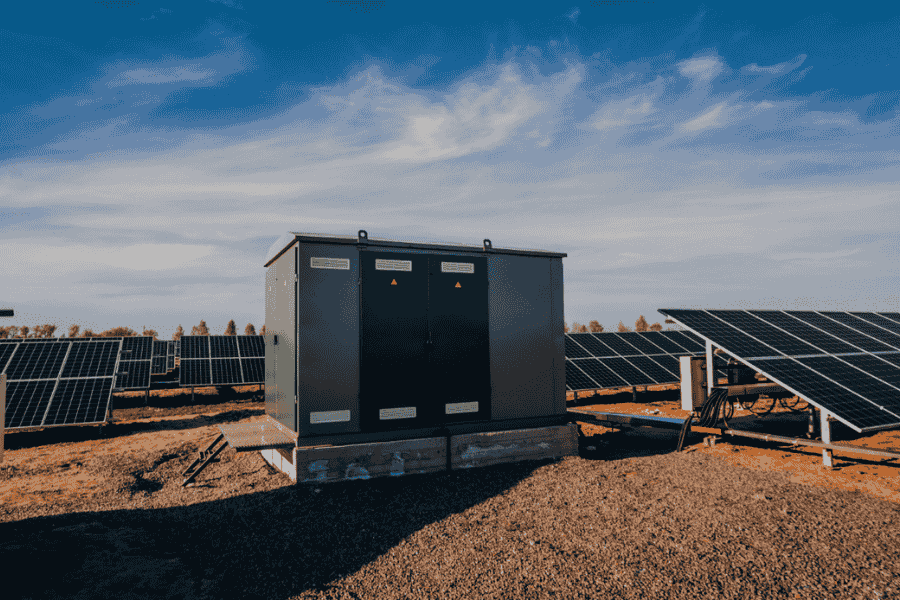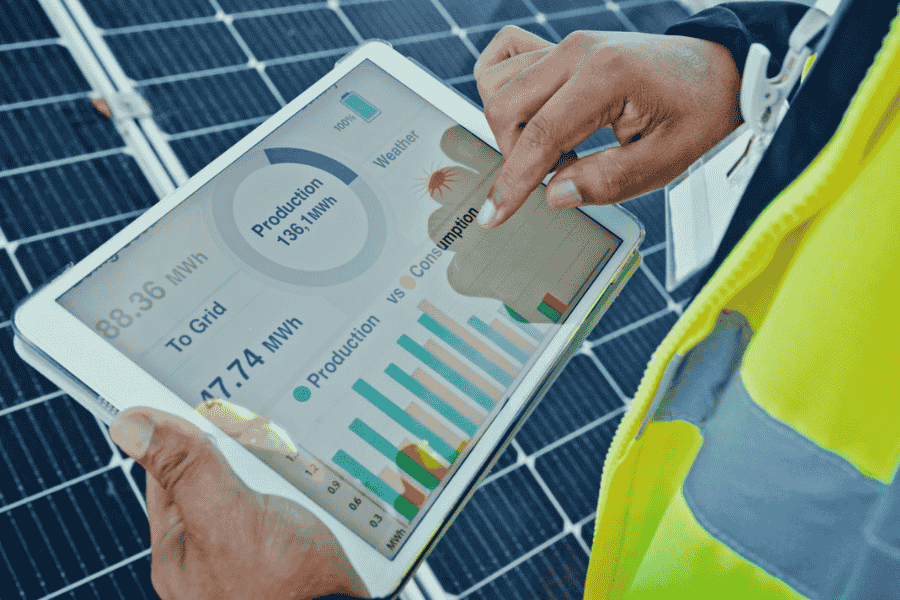HMS Photovoltaik is an emerging concept in the world of solar energy, combining traditional photovoltaic systems with smart monitoring and hybrid energy management. Unlike standard PV setups, an HMS Photovoltaik system doesn’t just generate electricity; it also tracks performance in real time, integrates with battery storage, and optimizes usage for lower bills and greater sustainability. Homeowners, businesses, and even the maritime sector are exploring this technology to gain more energy independence and reduce carbon emissions. In this guide, we’ll explain what HMS Photovoltaik is, how it works, its costs, and why it matters in 2025.
What is HMS Photovoltaik?
HMS Photovoltaik refers to a modern solar technology that combines intelligent monitoring systems with traditional photovoltaic (PV) modules. Unlike standard PV systems, which simply generate electricity from sunlight, HMS solutions integrate smart inverters and advanced software to optimize energy production, track performance, and improve safety through data-driven monitoring and automation.
The relevance today is clear: as energy costs rise and the demand for sustainable power grows, HMS Photovoltaik offers households and businesses a smarter way to harness solar energy while ensuring maximum efficiency and long-term savings.
Basics of Photovoltaics & Energy Management
At the core of HMS Photovoltaik is the photovoltaic effect, the process where sunlight is converted into electricity using solar cells, often made of silicon. Traditional PV systems send this energy straight into the home or the grid, but hybrid monitoring systems take things further. By integrating battery storage and smart energy management systems (EMS), users can track solar production in real time, reduce reliance on the grid, and maximize efficiency with the help of smart scheduling and load management. Over time, technology has evolved from simple rooftop panels to advanced solutions like bifacial modules, BIPV façades, and AI-powered monitoring tools that boost performance and savings.
Core Components of an HMS Photovoltaik System
An HMS Photovoltaik setup brings together several key components that work in harmony. At the heart are solar modules, such as monocrystalline, PERC, TOPCon, or even bifacial panels that capture sunlight from both sides. Power conversion is handled by inverters from classic string inverters to advanced microinverters like the Hoymiles HMS series ensuring maximum efficiency through MPPT technology. To store energy, battery systems such as LiFePO₄ or NMC are paired with a Battery Management System (BMS) for safety and longevity. Finally, the Energy Management System (EMS) provides real-time monitoring, IoT connectivity, and predictive maintenance tools. Together, these components form a smart, reliable solar ecosystem.
How HMS Photovoltaik Works

An HMS Photovoltaik system follows a simple but smart energy flow. Solar panels capture sunlight and convert it into electricity through the photovoltaic effect. The inverter whether a string inverter or a microinverter like the Hoymiles HMS series transforms this DC power into usable AC for your home or business. Excess energy is stored in batteries such as LiFePO₄, managed by a BMS to ensure safety and efficiency. At the same time, the Energy Management System (EMS) tracks performance in real time, detects faults, and optimizes usage. In maritime applications, systems are adapted with salt-resistant coatings and lightweight designs to power ferries, yachts, and research vessels.
Benefits of HMS Photovoltaik
HMS Photovoltaik goes beyond standard solar setups by combining electricity generation with advanced monitoring, storage, and intelligent energy management. This integration not only makes power use more efficient but also ensures systems are adaptable for homes, businesses, and even maritime applications.
Key Advantages:
- Lower energy costs through optimized solar production.
- Improved return on investment (ROI) with subsidies and smart load balancing.
- Energy resilience thanks to reliable battery storage options.
- Environmental impact reduced through measurable CO₂ savings.
- Smart control via EMS dashboards and mobile apps.
- Specialized maritime solutions offering quiet operation and reduced port emissions.
Challenges & Limitations
While HMS Photovoltaik offers many advantages, it also comes with certain barriers that buyers and installers should consider. These challenges range from higher upfront investments to technical and environmental factors that can affect long-term performance.
Key Challenges:
- Initial investment – higher cost compared to standard PV systems.
- System complexity – requires careful design, shading analysis, and skilled installation.
- Battery upkeep – storage systems need monitoring and eventual replacement.
- Environmental factors – maritime applications demand corrosion and humidity protection.
- Digital reliance – EMS platforms depend on stable internet and software updates.
Applications & Use Cases
HMS Photovoltaik systems are highly adaptable, making them suitable for different sectors where efficiency, independence, and sustainability are priorities. From private households to large-scale industries, these systems can be tailored to match unique energy needs.
Key Applications:
- Residential homes – rooftop solar with storage and monitoring for lower bills.
- Commercial & industrial sites – load management, peak shaving, and higher ROI.
- Agriculture – powering irrigation pumps, greenhouses, and cold storage.
- Public infrastructure – solar-powered streetlights and community energy projects.
- Maritime sector – ferries, yachts, and research vessels using hybrid propulsion.
Costs, ROI & Subsidies
The overall cost of an HMS Photovoltaik system depends on size, storage, and components, but subsidies and smart energy use often shorten payback times and improve ROI.

Cost and ROI overview for different PV system types and subsidy models.
| System Type | Average Cost (€) | Payback Time | Notes / Incentives |
|---|---|---|---|
| Standard PV (no storage) | €6,000 – €10,000 | 10–14 years | Lower entry cost, fewer features |
| HMS PV + Storage (LiFePO₄) | €12,000 – €18,000 | 8–12 years | ROI faster with storage + subsidies |
| HMS PV (Commercial setup) | €25,000+ | 6–10 years | Industrial ROI improves with peak shaving |
| Subsidies (Germany) | Varies | Cuts 10–25% | EEG feed-in tariff, KfW loans, state bonuses |
Installation & Best Practices
Installing an HMS Photovoltaik system starts with a feasibility check: evaluate roof space, shading, and energy demand. Proper system sizing is key to balancing generation, storage, and grid usage. For maximum efficiency, panels should be positioned at the right tilt and azimuth, while shading analysis ensures consistent output. Choosing the right inverter string or microinverter like the Hoymiles HMS series and a reliable battery system (LiFePO₄ or NMC) will improve ROI and system life. Compliance with safety standards such as IEC and UL is essential and aligning with certification and architecture best practices ensures reliability and long-term scalability.. Regular maintenance, software updates, and yearly inspections help ensure safe, efficient, and long-lasting performance.
Comparisons & Alternatives
HMS Photovoltaik delivers more control and efficiency than standard PV but at a higher cost, while alternatives like Enphase or SolarEdge provide similar smart features with varying levels of scalability and compatibility.
Feature comparison of HMS Photovoltaik vs. standard PV systems and brand-led alternatives.
| Feature / System | HMS Photovoltaik | Standard PV System | Enphase / SolarEdge (Alternatives) |
|---|---|---|---|
| Monitoring | Real-time EMS, predictive fault detection | Limited / none | Advanced dashboards & monitoring |
| Energy Storage | Fully integrated (LiFePO₄, NMC) | Optional | Supported (brand-specific) |
| Efficiency | High (MPPT, microinverters) | Moderate | High (depends on brand) |
| Upfront Cost | Higher | Lower | Medium–High |
| Best For | Homeowners, businesses, maritime, and agriculture | Budget-focused users | Tech-savvy users wanting a brand ecosystem |
| Scalability | Excellent (microinverters) | Moderate | High (modular systems) |
Real-World Case Studies
Across different sectors, HMS Photovoltaik is proving its value. In residential homes, families use rooftop solar with microinverters and LiFePO₄ batteries to cut energy bills and secure backup power during outages. Businesses and factories apply HMS systems for peak load management, achieving faster ROI and long-term savings. In agriculture, farmers power irrigation pumps and greenhouses with solar modules paired with smart monitoring, reducing diesel costs and emissions. The maritime sector is also embracing HMS Photovoltaik: ferries, yachts, and research vessels now run partially on solar-electric propulsion, showing how hybrid energy systems can reduce emissions and operate quietly at sea.
Future Trends & Innovations

The future of HMS Photovoltaik looks promising as new technologies reshape solar energy. AI-driven monitoring will allow predictive fault detection, smarter load balancing, and even weather-based optimization. Advanced battery storage solutions such as solid-state and flow batteries are expected to increase safety and efficiency beyond today’s LiFePO₄ and NMC systems. Building-integrated photovoltaics (BIPV), including solar façades and shingles, will make solar power a natural part of architecture. In the energy market, vehicle-to-home and vehicle-to-grid connections will let electric cars serve as mobile storage. Blockchain-based peer-to-peer trading could also enable households and businesses to share excess solar energy seamlessly.
FAQs
Q: What is HMS Photovoltaik in simple terms?
A: HMS Photovoltaik is a hybrid solar system that combines photovoltaic panels, inverters, battery storage, and a smart energy management system (EMS). It not only generates electricity but also monitors and optimizes usage in real time.
Q: How does HMS Photovoltaik differ from a standard PV system?
A: Unlike traditional PV systems, HMS Photovoltaik includes advanced monitoring, predictive maintenance, and hybrid operating modes with storage. This leads to better efficiency, grid independence, and long-term savings.
Q: Is HMS Photovoltaik worth it in 2025?
A: Yes. With rising energy costs and government subsidies, HMS Photovoltaik offers faster ROI, reduced CO₂ emissions, and greater energy security for both homes and businesses.
Q: What are the typical costs and payback times?
A: Costs vary by system size and battery choice, but many residential setups reach payback in 8–12 years. Incentives such as Germany’s EEG, KfW subsidies, or net metering programs can shorten amortization further.
Q: Which inverters and batteries are compatible?
A: HMS Photovoltaik systems work with microinverters like the Hoymiles HMS series, as well as LiFePO₄ or NMC batteries managed by a BMS for safety and longevity.
Q: Are there subsidies available in Germany, Austria, or Switzerland?
A: Yes. Programs like Germany’s EEG feed-in tariff, regional KfW loans, and local storage incentives support homeowners and businesses adopting HMS Photovoltaik. Similar schemes exist in Austria and Switzerland.
Conclusion
HMS Photovoltaik represents the next step in solar energy, combining photovoltaic panels, smart inverters, battery storage, and advanced monitoring into one hybrid system. Unlike standard PV, it delivers greater efficiency, real-time insights, and energy independence for homeowners, businesses, and even the maritime sector. While upfront costs and complexity are higher, government subsidies and long-term savings make it a strong investment in 2025 and beyond. Whether your goal is lowering electricity bills, reducing CO₂ emissions, or achieving grid resilience, HMS Photovoltaik offers a future-ready solution that blends sustainability with modern technology.


